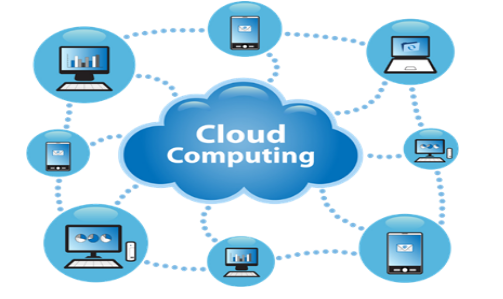The Benefits and Drawbacks of Cloud Computing
The Benefits and Drawbacks of Cloud Computing:
1. Cost Savings:
Cost savings are one of the main benefits of cloud computing. Instead of having to invest in and maintain expensive on-premises infrastructure, organizations can use shared cloud resources, which can be more cost-effective. This is particularly beneficial for small and medium-sized businesses that may not have the resources to invest in their own IT infrastructure.
2. Scalability:
Cloud computing also allows organizations to scale their computing resources as needed. This means that they can easily add or remove resources as their business grows or shrinks, without having to make significant capital investments. This can help organizations to be more agile and responsive to changes in the market.
3. Accessibility:
Cloud computing also makes it easier for organizations to access their data and applications from any location with an internet connection. This can help to improve collaboration and productivity and can make it easier for employees to work remotely.
4. Reliability:
Cloud computing providers typically have a large number of servers, meaning that the data is stored in many different places. This makes the data more secure in the event of a natural disaster or another catastrophe. The data is also easily accessible in the event of a server outage, as it can be accessed from a different server.
5. Automatic Updates:
One of the key benefits of cloud computing is the automatic updates feature. With cloud computing, businesses don’t need to worry about updating their software and systems as the updates are automatically handled by the cloud provider. This means that businesses can always have access to the latest features and security patches without having to worry about the cost or effort of updating their systems. This automatic update feature ensures that businesses are always up-to-date with the latest technology and software. This is especially beneficial for small and medium-sized enterprises that may not have the resources to manage updates on their own.
Additionally, automatic updates also ensure that businesses are always compliant with the latest security regulations and protocols. With automatic updates, businesses can focus on their core operations and not have to worry about the technicalities of maintaining their software and systems.
Drawbacks of Cloud Computing:
1. Security Concerns:
Cloud computing environments store and process data on remote servers that are managed by third-party providers. This means that businesses have less control over the physical and cyber security of their data. It also makes it easier for hackers to target these servers and steal sensitive information. To mitigate these risks, businesses can use encryption and other security measures, but it ultimately comes down to the security protocols and practices of the cloud provider.
2. Dependence on internet connectivity:
Cloud computing services are delivered over the internet, which means that they are dependent on a stable internet connection. This can be problematic in areas with poor connectivity or during service outages. Businesses that rely heavily on cloud computing may find it difficult to continue operating during these disruptions.
3. Limited control:
Cloud computing providers offer a set of pre-configured services that businesses can use. This can be limiting for businesses that need to customize or optimize their systems for their specific needs. Additionally, businesses may have limited access to certain configurations and settings, which can make it difficult to troubleshoot problems or perform advanced tasks.
4. Limited compliance:
Certain industries, such as finance and healthcare, have strict regulatory compliance requirements that must be met. Cloud providers may not be able to meet these requirements, which can limit the ability of businesses in these industries to use cloud computing.
5. Cost:
Cloud services can be expensive, especially for businesses that require a lot of storage and processing power. Additionally, cloud service providers often charge for additional services such as data migration, backups, and data recovery which can add up to significant costs. This can make cloud computing cost-prohibitive for some businesses, especially small and medium-sized enterprises.
6. Limited vendor lock-in:
Some cloud providers offer proprietary services that can make it difficult for a company to switch to a different provider. This can create a dependency on a single vendor, which can be problematic if the vendor raises prices or discontinues services.
7. Limited geographic reach:
Some providers have limited geographic reach, which can be a problem for businesses that operate in multiple countries. This can lead to difficulties in complying with data privacy and security regulations in different countries.
CONCLUSION:
Cloud computing is a technology that has many benefits, including cost savings, scalability, and accessibility, but it also has some drawbacks. Organizations must weigh the benefits and drawbacks carefully before deciding to implement cloud computing. The cost savings and scalability of cloud computing make it a great option for small and medium-sized businesses, however, security concerns and limited control over the infrastructure are important to keep in mind. The accessibility and reliability of cloud computing are of great benefit, but dependence on internet connection and the potential for downtime are important to consider. The limited customization options are also a factor that needs to be taken into account. Organizations must ensure that they have proper security measures in place to protect their data, and must also ensure that the cloud computing environment meets their specific needs.


One thought on “The Benefits and Drawbacks of Cloud Computing”